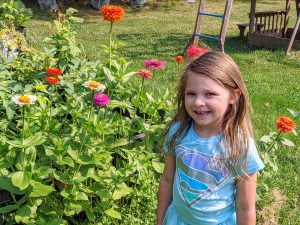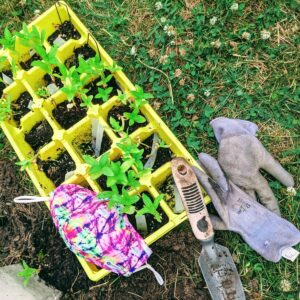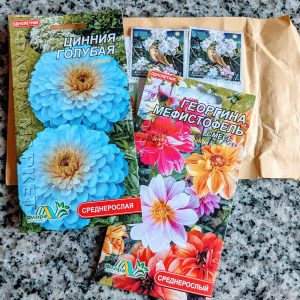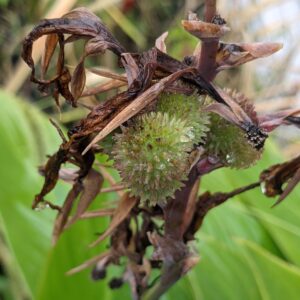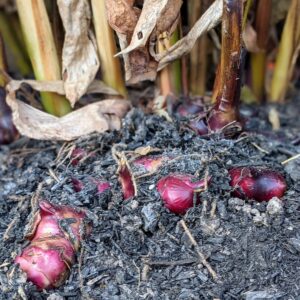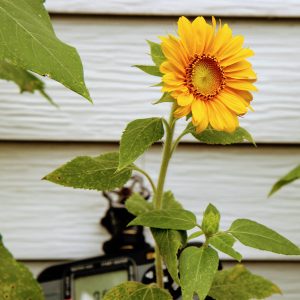How to Harvest Sunflower Seeds | Easy Tips
Growing sunflowers brings so many benefits to the garden, from gorgeous blooms to edible seeds for snacking! Discover how to harvest sunflower seeds for snacking after the flowers are done blooming.
Learning how to harvest sunflower seeds is easy enough for kids to do, too!
It’s a great sensory activity for little ones to enjoy. Our then four-year-old dressed up in her Doc McStuffins lab coat to collect sunflower seeds from our garden last year and loved it!
When to Harvest Sunflower Seeds
Harvest sunflower seeds after the flower head begins to dry on the stalk. In most cases, the sunflower petals will become dry and fall from the plant. Watch to see when the back of the flower head turns yellow or leave it on the stalk to turn brown and continue to dry.
Beware of birds if you choose the latter. You may wish to cover the sunflower head with a bag or other protective material to protect the seeds.
The mature seeds should be plump and full. Different varieties of sunflower seeds have different appearances, such as white with a gray strip, fully black, and so forth. To ensure sunflowers seeds are viable, you may want to pick one out to test it.
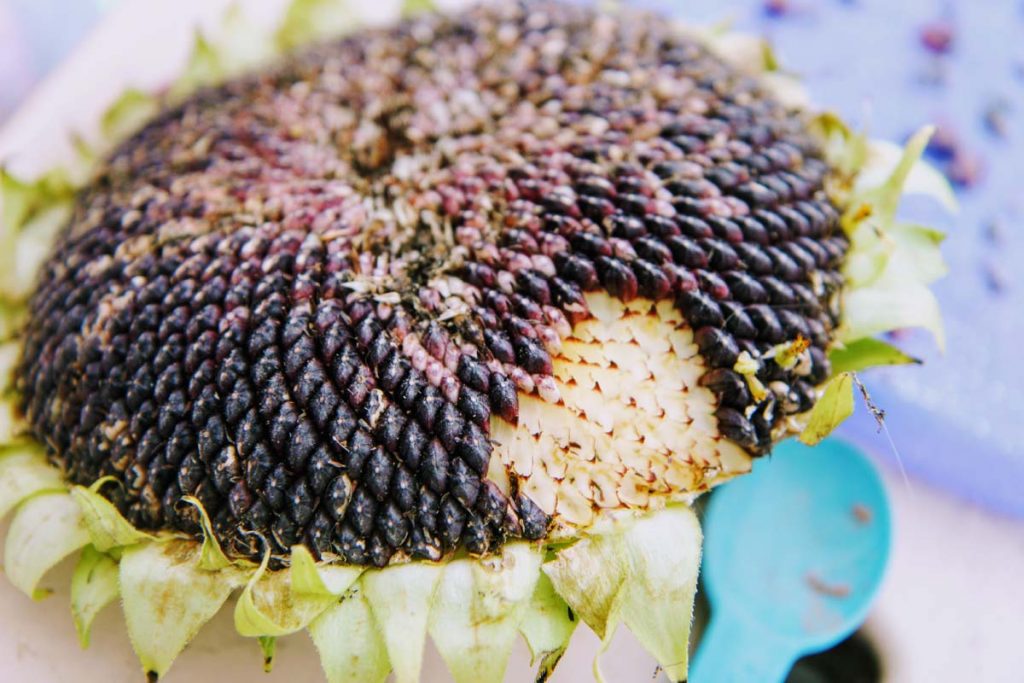
What Sunflower Seeds Are Edible?
With so many kinds of beautiful flowers out there, it’s only natural to wonder what sunflower seeds are edible. I’ve wondered this myself, since I love growing sunflowers for their beautiful blooms first and foremost.
Some of the most popular edible sunflower seeds include:
- Mammoth Grey Stripe
- Mammoth Russian
- Mongolian Giant
- Giganteus
- Titan
- Hopi Black Dye
- Paul Bunyan
- Sunzilla
- Kong Hybrid
- Royal Hybrid
- Super Snack
Some other sunflower seeds are also edible, though they may be small or otherwise not as desirable as those cultivated for snacking. (But the birds love them!)
Lemon queen, velvet queen, and autumn beauty sunflower seeds are edible but often not as popular as snacking seeds. Black oil sunflower seeds are generally left to the birds.
Sunflower seeds are not poisonous to humans or pets, dogs or cats.
However, one study as reported by Michigan State University did find that Aspergillus mold can cause contamination with a toxin called aflatoxin. Ongoing exposure to this toxin is shown to have potentially dangerous adverse health effects.
This aflatoxin is one of the most powerful liver carcinogens on record. The problem seems to be worse in third world countries, although it is still best to source your food responsibly.
**Editor’s Note: Follow your doctor’s or nutritionist’s recommendations. No medical advice is offered at BunnysGarden.com.
What Are the Benefits of Sunflower Seeds
Though they’re small, sunflower seeds are also mighty. Sunflower seeds benefits include:
- Good Source of Protein
- Rich in Vitamins and Antioxidants, including:
- Vitamin E
- Thiamin – Vitamin B1
- Pyridoxine – Vitamin B6
- Iron
- Copper
- Selenium
- Manganese
- Zinc
- Healthy Source of Polyunsaturated Fat (Good Fats)
- Good for Weight Loss
- Excellent Bird Seed Choice
For these reasons and more, consider growing your own sunflowers so you can harvest sunflower seeds in your own backyard garden.
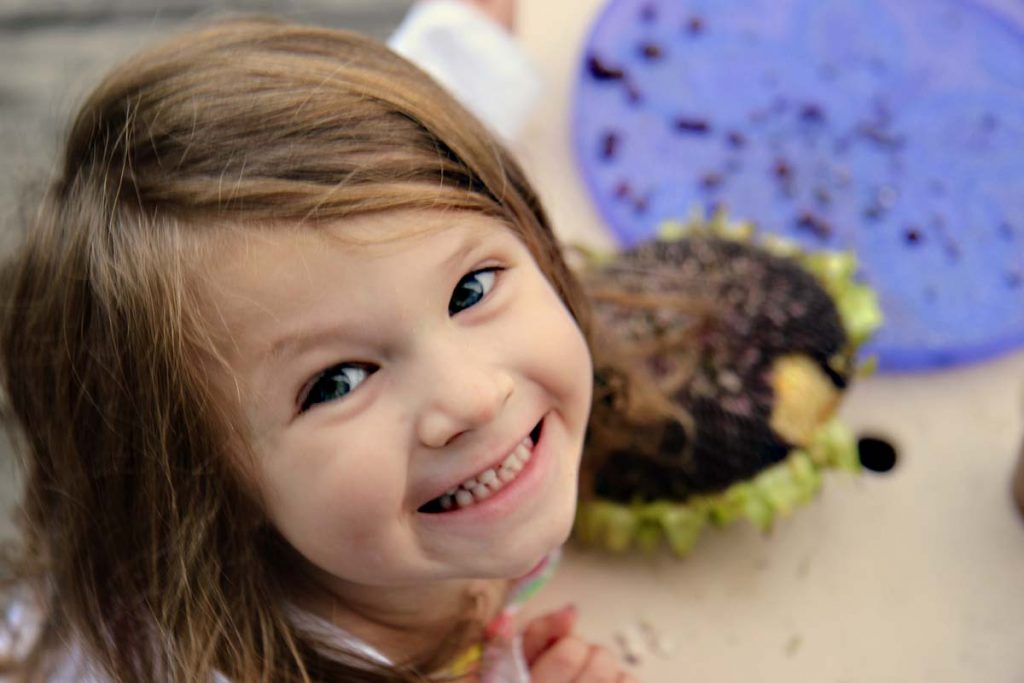
Harvesting Sunflower Seeds
Learning how to harvest sunflower seeds is probably easier than you may think. A lot of it is a waiting game.
Follow these steps on how to harvest sunflower seeds:
- Check the sunflower head to see if it is beginning to dry. Look for dried petals, petals falling off, and brown or yellow faded color.
- Look at the back of the sunflower head. Notice if it is green (too early), yellow (okay to cut down if you plant to hang and dry them yourself), or brown (ready to harvest!).
- If the sunflower head is still green
- Wait a few more days and check again.
- Once it is yellow or brown, proceed to those instructions.
- If the sunflower head is yellow
- Consider whether you plan to hang the spend sunflower head up to finish drying.
- If yes, continue these steps. If not, continue to wait until the back of the sunflower head turns brown and skip to those steps.
- Once the sunflower head is yellow, cut above any leaf sets to remove the head from the stalk.
- Check for any visible bugs, caterpillars, etc., and remove them if possible.
- Tie some twine to the stem and hang the sunflower head in a dry and dark place for about two weeks.
- Repeat for any other sunflower heads that are ready for harvest.
- Consider whether you plan to hang the spend sunflower head up to finish drying.
- If the sunflower head is brown
- Cut to remove the sunflower head from the stem.
- Gather up any other spent sunflower heads for the harvest.
- Sit down at a table with a tray or cookie sheet under the sunflower head.
- Begin picking out the sunflower seeds from the outer edge.
- Take notice of any damaged seeds or those with buggy holes and discard.
- Deposit the good sunflower seeds into a dry paper bag or envelope.
- Label the envelope with the seed type and date.
- Repeat the process for any other sunflower seeds you wish to harvest.
- Store the seeds in a cool, dry place.
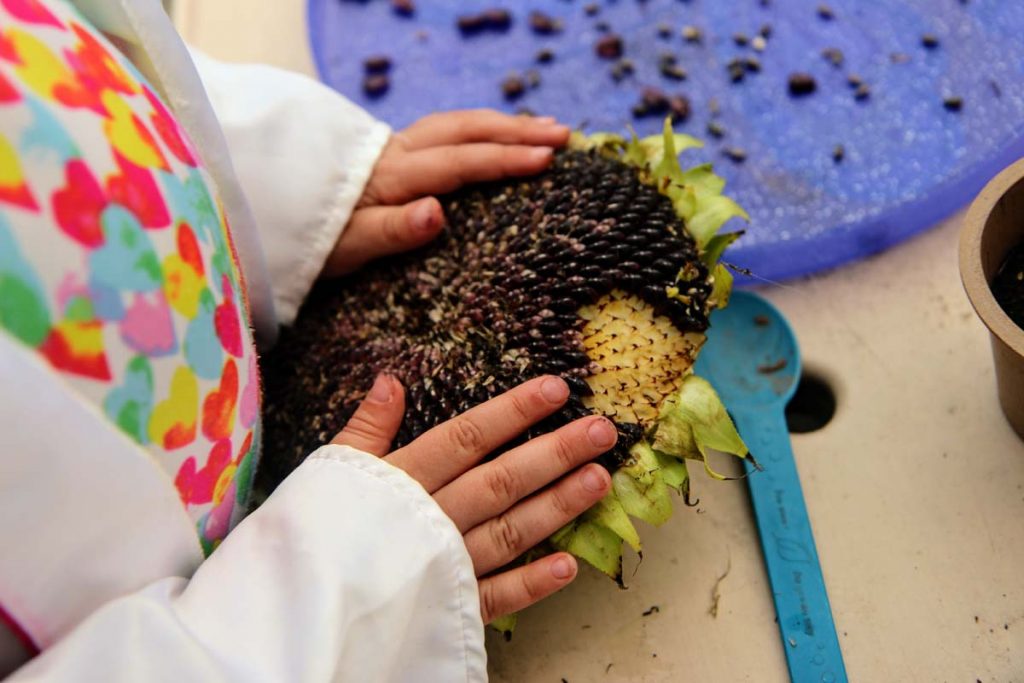
Final Thoughts: Mastering How to Harvest Sunflower Seeds
When you learn how to harvest sunflowers, it becomes a much easier process for the future. Some gardeners grow many, many sunflowers. It’s so much easier when cutting and harvesting sunflower heads in a big batch that way.
That is, as long as you don’t run into problems with your sunflowers along the way.
Last year we had a terrible time with worms in our sunflowers. When it came time to harvesting them, I found many of the sunflower seeds weren’t viable because they were infested with worms.
I am hopeful that this year will come along better with some better pest resistance!
I plan to research that sunflower worm in a different post and I’ll be sure to share any tips with you.
Of course, if you have tips on protecting your sunflower seed harvest or anything else related to sunflowers, let’s chat in the comments! I’d love to hear from you.
Happy Gardening!

